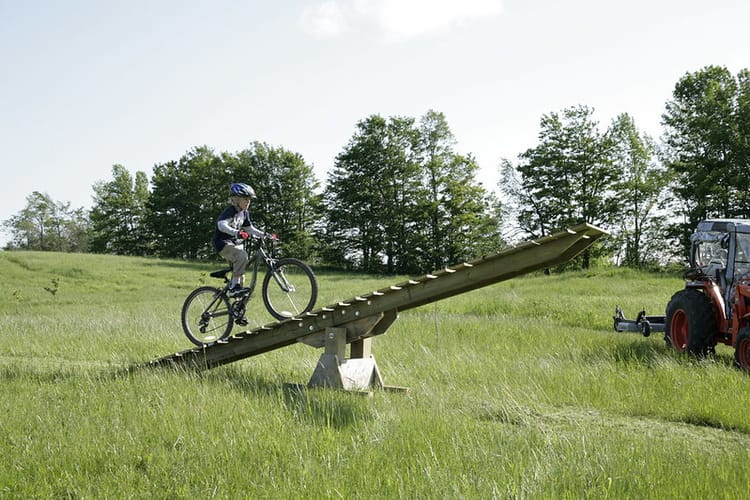Stillness Is a Strategy Too: Leading from Clarity Instead of Exhaustion

“I’m tired. Are you tired?”
“Nah. Well, yes, I’m exhausted, but I have to keep going. I need to get this project done.”
“Are you sure you don’t want to take a break and come back to it later, when you’re refreshed?”
“No can do. I have to force myself to stay in the zone. Just gonna push through and have another coffee and maybe something with lots of sugar to keep me wired.”
When was the last time you had a conversation like this?
We’ve all “been there, done that” at some point — trying to force creativity, finish a project for work, or push through another client meeting. The question is, just how effective were you?
And how efficient?
But wait, I’m not done:
How did you feel when you finally got home or stopped working?
How did your partner, family, or friends feel—especially if you weren’t able to be present, let alone enjoy their company?
Everything has a cost.
In leadership, many people seem to believe that cost must be high — that greater experience and responsibility requires more sacrifice.
The cost of holding on to that belief? Complete burnout or overwhelm.
If higher compensation for more responsibility and experience were truly equitable, leadership wouldn’t mean doing more than someone who earns less. Instead, it would — and, I believe it should — mean becoming more skillful, more efficient, and more effective within the scope of your responsibilities.
Efficiency and effectiveness are qualities of a clear mind — a mind that navigates the way with unique skills, self-mastery, and inspired leadership.
And a clear state of mind isn’t something that happens accidentally. It’s cultivated — and preserved — through regular practices of stillness.
What Stillness Really Means
There are other words you can use for stillness: contentedness, peacefulness, peace of mind, or equanimity.
Whatever you call it...
Like variations of meditation, stillness invites you to allow your thoughts, emotions, and sensations to arise and pass — without judgment or resistance.
True stillness isn’t the absence of action.
Instead, it is the skill to navigate life’s challenges with equanimity and flexibility, and the wisdom to know when to let go.
Metaphorically, it’s having the presence of mind to know that you need to swim with the current instead of fighting against it — so you don’t exhaust yourself or drown.
Stillness Isn’t a Luxury — It’s a Skill
There’s no best way to practice stillness. It’s about finding one (or a few) practices that are easy and enjoyable for you — that offer the greatest benefit, whether that’s speed, quality, or time of day for you.
But to truly benefit from stillness, you need consistency. Otherwise, it’s like learning a new language: if you don’t use it, you lose it.
Understand...
It’s also your capacity for surrender, play, and trust.
Think about it. Have you ever had your best ideas or creative solutions while taking a shower, jogging, doing something rhythmic like dancing, or something simple like listening to your favourite music?
In those moments, you are unconsciously practicing stillness — by virtue of focusing on one thing without distraction, and giving your mind the freedom and room to explore.
This is the clarity of mind that human-hearted leadership requires.
10 Stillness Practices You Can Start Today
No matter how little time you think you have, I invite you to choose one of these simple practices:
- Take an early morning walk with your dog (or alone).
No headphones, no texting or browsing. Just the rhythm of stopping and starting, noticing nature, and being with your dog. (This is one of my favourites.) - Practice slow, mindful yoga.
This is sometimes called Yin or Restorative yoga. The focus is on slow, breath-led movements and long holds that invite you to focus inward, notice sensations, and practice patience. - Journal a “Stillness Page.”
This is not a brain dump. Instead, gently write what you notice in the moment — your sensations, emotions, or other small details — without judgment. - Drink your morning coffee or tea without multitasking.
No phone, tablet, email, or planning. Sit, taste, feel the warmth, and savour the flavours. - Lie on the ground after exercise, just breathing.
After a run or a workout, don't rush to the next thing. Lay down, breathe deeply, and let your body settle completely. In yoga, this is called Savasana (corpse pose). Just lie on the floor and do nothing. - Read one poem or a chapter from the Tao Te Ching, slowly.
Savour it like you would good food. Let the words soak into you without analysis. - Meditate for five minutes.
Sit, notice, and let whatever arises come and go. - Practice 3-5 deep breaths before starting a meeting, replying to a message, or getting into your car.
Breathe all the way in through your nose. Hold for a moment, inhale a bit more, hold another moment, and then slowly exhale again through your nose. Repeat. - Sketch or doodle aimlessly for five minutes.
Don’t think or set an art goal. Just move your hand and watch the shapes appear. - Listen deeply to ambient sounds or calming audio.
Focus your attention on the hum of a fan, your heartbeat, binaural beats, or brainwave entrainment sounds. - BONUS: Give your pet your undivided attention.

Consider this:
What would change in your leadership if you trusted stillness more?
If you could only pick one of the practices above, which one feels intuitively right? I’d love to know — share your answer in the comments, or...





Member discussion